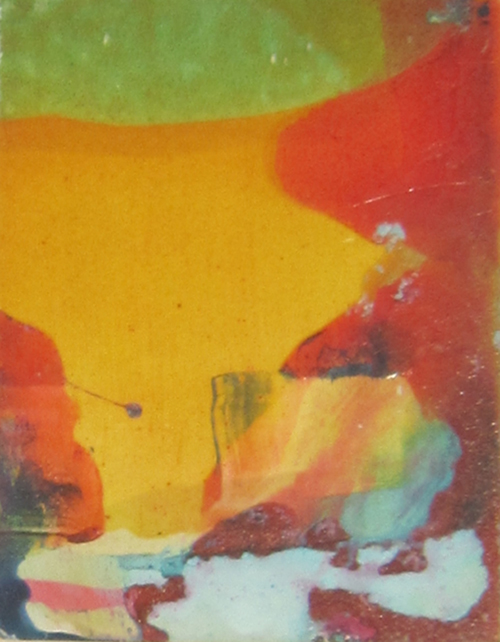Senkichiro NASAKA 1923-2014
Senkichiro Nasaka was born in Osaka Prefecture in 1923, and in 1942,
he entered Kyoto City Specialist School of Painting (now Kyoto City University
of Arts), where he was a contemporary of Shiraga Kazuo. In 1950, his work
was selected for the Exhibition of Kansai Sogo Bijutsu, and in 1952, he
completed the Japanese painting course at Kyoto City Spacialist School of Arts.
After changing his emphasis to Western-style painting in 1963, he first exhibited
his work in the 15th Gutai Exhibition in 1965. He became a member of Gutai in
the same year and exhibited with them continually after that. At the beginning of
his affiliation with Gutai, he created works under the influence of the informel
style, but he soon began to create the kind of art that characterized the later
Gutai works, a blending of art with technology. It can be said that he embodied the spirit
of Gutai through his diverse concepts and production techniques such as
hard-edge paintings, Kinetic art and light art.
Some of his works are included in the collections of the Ashiya City Museum of Art
and History and the Miyagi Museum of Art.
Senkichiro NASAKA 1923-2014
Senkichiro Nasaka was born in Osaka Prefecture in 1923, and in 1942,
he entered Kyoto City Specialist School of Painting (now Kyoto City University
of Arts), where he was a contemporary of Shiraga Kazuo. In 1950, his work
was selected for the Exhibition of Kansai Sogo Bijutsu, and in 1952, he
completed the Japanese painting course at Kyoto City Spacialist School of Arts.
After changing his emphasis to Western-style painting in 1963, he first exhibited
his work in the 15th Gutai Exhibition in 1965. He became a member of Gutai in
the same year and exhibited with them continually after that. At the beginning of
his affiliation with Gutai, he created works under the influence of the informel
style, but he soon began to create the kind of art that characterized the later
Gutai works, a blending of art with technology. It can be said that he embodied the spirit
of Gutai through his diverse concepts and production techniques such as
hard-edge paintings, Kinetic art and light art.
Some of his works are included in the collections of the Ashiya City Museum of Art
and History and the Miyagi Museum of Art.

